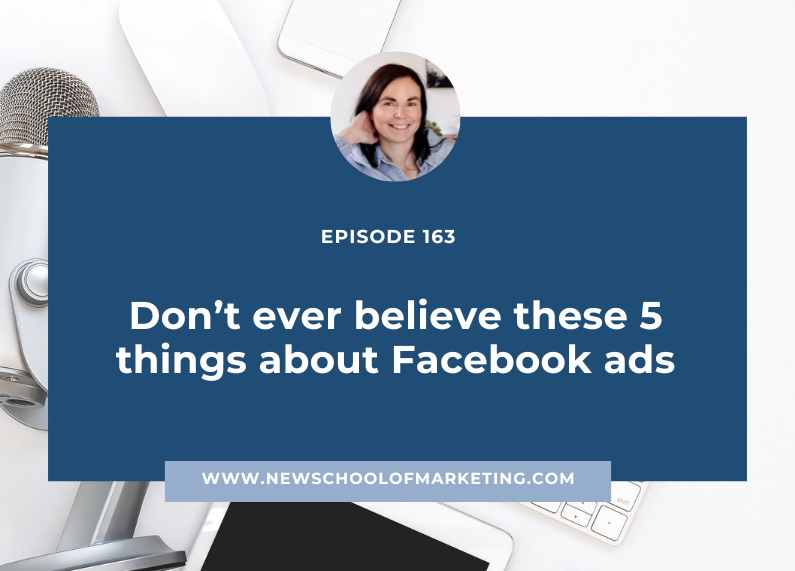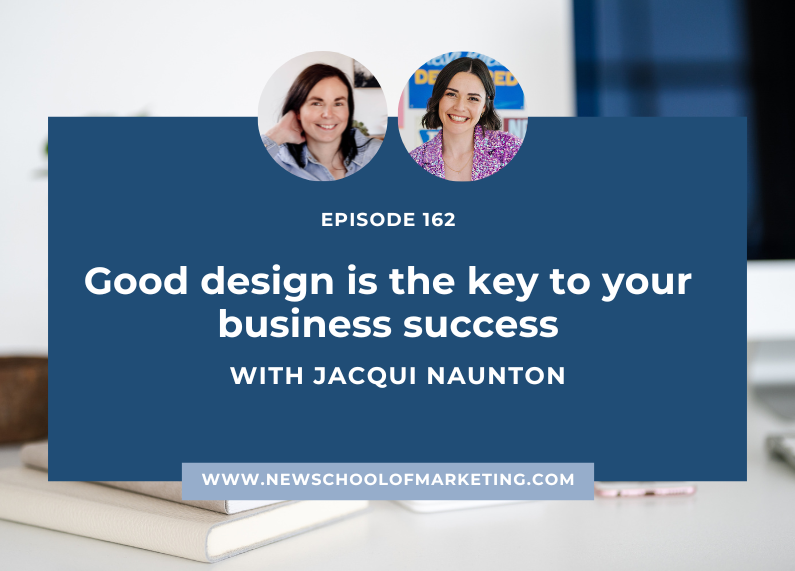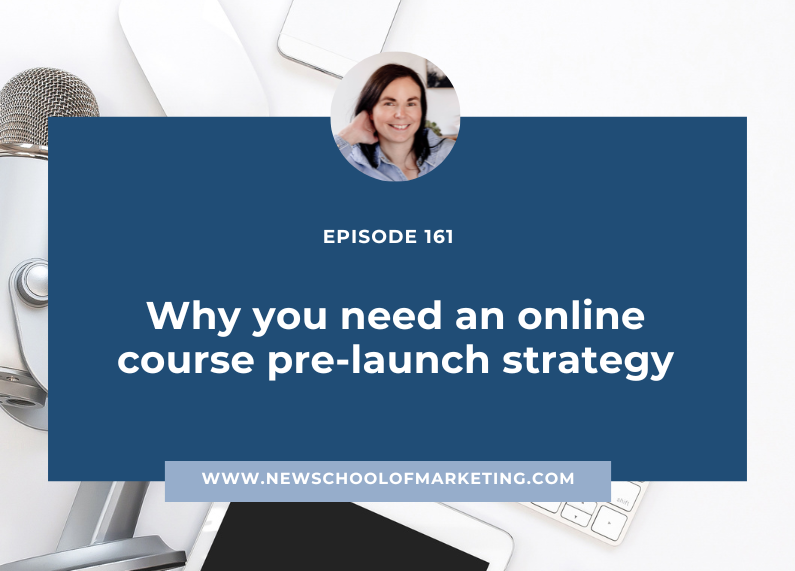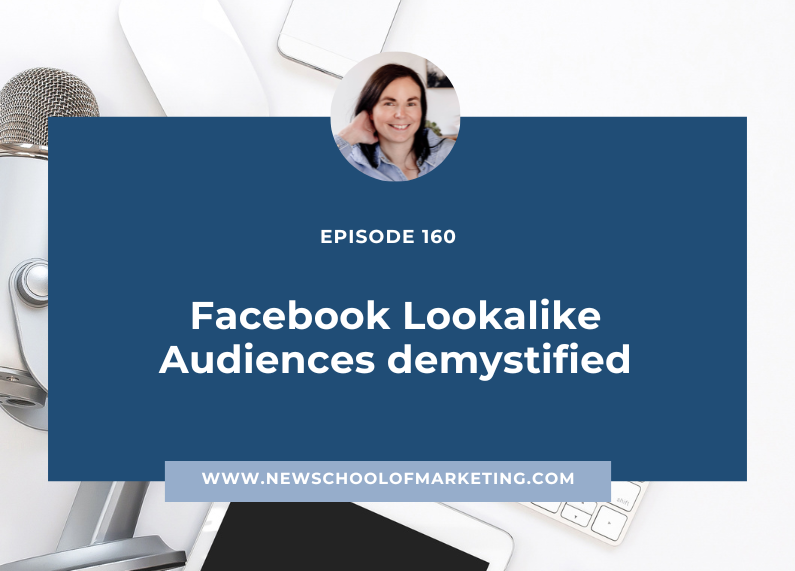
Over the past week I’ve had the same conversation a number of times so I thought it would be good to share it in this podcast episode.
I’ve spoken with a number of people about creating online courses and how unfortunately a lot of people skip a few steps in the process.
You see, creating an online course is a brilliant way to package up your knowledge, and I’m definitely not trying to stop you from doing that.
What I do want to talk about is how you’re planning to sell it.
Selling an online course is often harder than you think.
Not to rain on your parade but even though you built it, doesn’t mean that they’ll come.
You see, people need to know about your course before they can buy it.
That’s where sales funnels come in.
In short, a sales funnel is the way you lead your potential customer on a journey to becoming a paying customer.
A sales funnel in the online marketing world will help turn website visitors into email subscribers, and email subscribers into customers or clients.
Tune in 🎧
Connect with me
Website: www.newschoolofmarketing.com
Facebook: @newschoolofmarketing
Facebook group: @newschoolofmarketing
Instagram: @bianca_mckenzie
Love the New School of Marketing Podcast?
Let’s be honest and upfront, because you know that’s what I’m all about. Podcast reviews are super important to iTunes and the more reviews we receive the more likely iTunes will reward us with better reach.
I want to reach more course creators, store owners and awesome business builders that can add extreme value to our awesome insiders. I already love that you’re here and ready to rock your business, but I’d be extremely grateful if you would review me on iTunes and SUBSCRIBE!
Can’t wait to teach you everything I know about online marketing!
Transcript
Hey everyone, I hope you’re all well.
Over the past week I’ve had the same conversation a number of times so I thought it would be good to share it in this podcast episode.
I’ve spoken with a number of people about creating online courses and how unfortunately a lot of people skip a few steps in the process.
You see, creating an online course is a brilliant way to package up your knowledge, and I’m definitely not trying to stop you from doing that.
What I do want to talk about is how you’re planning to sell it.
Selling an online course is often harder than you think.
Not to rain on your parade but even though you built it, doesn’t mean that they’ll come.
You see, people need to know about your course before they can buy it.
That’s where sales funnels come in.
The Thinkific blog shares a brilliant analogy. Basically, not having a sales funnel for your online course is the equivalent of setting up a lemonade stand in the middle of the desert where no one will ever find it. Sure, it’s super hot outside, your lemonade might be delicious but if you’re not giving people a clear path to follow and that leads to your lemonade stand, they will never find it.
In short, a sales funnel is the way you lead your potential customer on a journey to becoming a paying customer.
A sales funnel in the online marketing world will help turn website visitors into email subscribers, and email subscribers into customers or clients.
What is a sales funnel?
As mentioned above, it is the way you are guiding your customer through your business to becoming a paying client.
The word funnel is often used to describe this journey, because when you create a visual representation of this process it looks like a funnel.
It’s like an upside down triangle. So it’s wider at the top and narrow at the bottom.
The top of the funnel is the widest, because this is where the beginning stages of awareness happen, while the bottom of the sales funnel is for paying customers.
The goal is to “funnel” down your prospective customers into those who are serious about buying.
How does a sales funnel work?
There are various steps, or stages, of a sales funnel that your prospective customer goes through.
We’ll go through those stages below:
1: Awareness
The first stage is when your prospective client becomes aware of a need they have, for example they are looking to solve a problem and search for the answer to that problem. They might become aware of your solution through your blog or a video.
2: Interest
The next stage is where they are becoming interested in your product, as you have shown them that you have a solution for them. They might decide to join your email marketing list for further information.
3: Evaluation
In this next stage your prospective customer will compare you with others who offer a solution to see who offers the best solution to their needs.
4: Decision
The decision stage is where your prospective customer is ready to make a purchase. They have evaluated the options and now they have made a decision on what’s right for them.
5: Purchase
This final stage is where the prospective customer becomes a paying customer. They have committed to purchase.
Depending on your offer, your sales funnel might be a longer process than others. Products and services that have a higher price point may need a longer sales funnel and more frequent points of contact than lower priced products or services.
Do you need a sales funnel?
Yes you do!
Everyone needs a sales funnel, whether it’s an online sales funnel or an offline sales funnel. A sales funnel is essentially a step by step process of guiding your prospective client through a decision making process to becoming a paid client.
It’s important to create a strategy for your sales funnel so that you are making the most of every marketing activity in your business.
You’re there to guide them to take the next step in the purchase process.
You want to nurture your prospective clients to the point where they realise they can’t live without buying your product or service.
Why do you need a sales funnel?
I think we discussed some of this in the previous point but I’ll elaborate on why you need a sales funnel.
Having an online sales funnel (or multiple funnels) gives you the opportunity to not always be chasing the next sale. It allows you to automate parts of your business so that you can focus on working with your clients or delivering a stellar product.
Great sales funnels build trust and credibility over time by providing incredibly valuable content to your readers. Gaining trust will give your prospective customers an incentive to buy from you, as purchase decisions are often based on the know, like and trust factor. A sales funnel facilitates this know-like-trust process.
A well thought out sales funnel is crucial to scaling your business. It helps you with building authentic relationships with your prospective customers and nurture them to become long-time customers and advocates for your business.
There are a number of different ways to create a sales funnel and it comes down to your ideal client to what you create.
Most sales funnels have a free offer, a lead magnet. I talked about lead magnets in the previous episode so skip back to that episode to learn more.
They also have a nurture email sequence where you send your new subscribers a series of emails that provide value and help them get to know you.
You also need a sales page, that talks about your paid offer and what it will mean for your buyers. Learn more about sales page writing so that you’re really making the most of it.
A funnel has three parts, a top of funnel, middle of funnel and bottom of funnel. The top is where you focus on marketing activities and tactics that drive traffic to your funnel.
So a marketing tactic and a funnel are different. A marketing tactic could be running Facebook ads, or writing blog posts, or being a guest on a podcast. It’s all of the activities that you do to drive traffic to your website and offers.
The middle of the funnel is where you focus on nurturing your warm audience. It’s where you build a relationship with your audience.
And the bottom of the funnel is where you focus on converting your fans into buyers.
Each funnel that I’ve seen is similar in structure, but the intricacies are different. For example, you might create a video series as your lead magnet and someone else might use a quiz.
Your email nurture sequence might have 6 emails and someone else might have 12.
There are no specific rules, as long as it’s relevant to your audience.
The main point of this episode is to let you know that you need to create a sales funnel to sell your online course or your digital product.
Without a funnel it’s extremely hard to sell your course.
Your homework for this week is to sit down and map out how you’re going to lead someone from not knowing you to buying from you. And it’s not as easy as putting up a social media post and crossing your fingers that they’ll buy. They need to get to know you first.








0 Comments